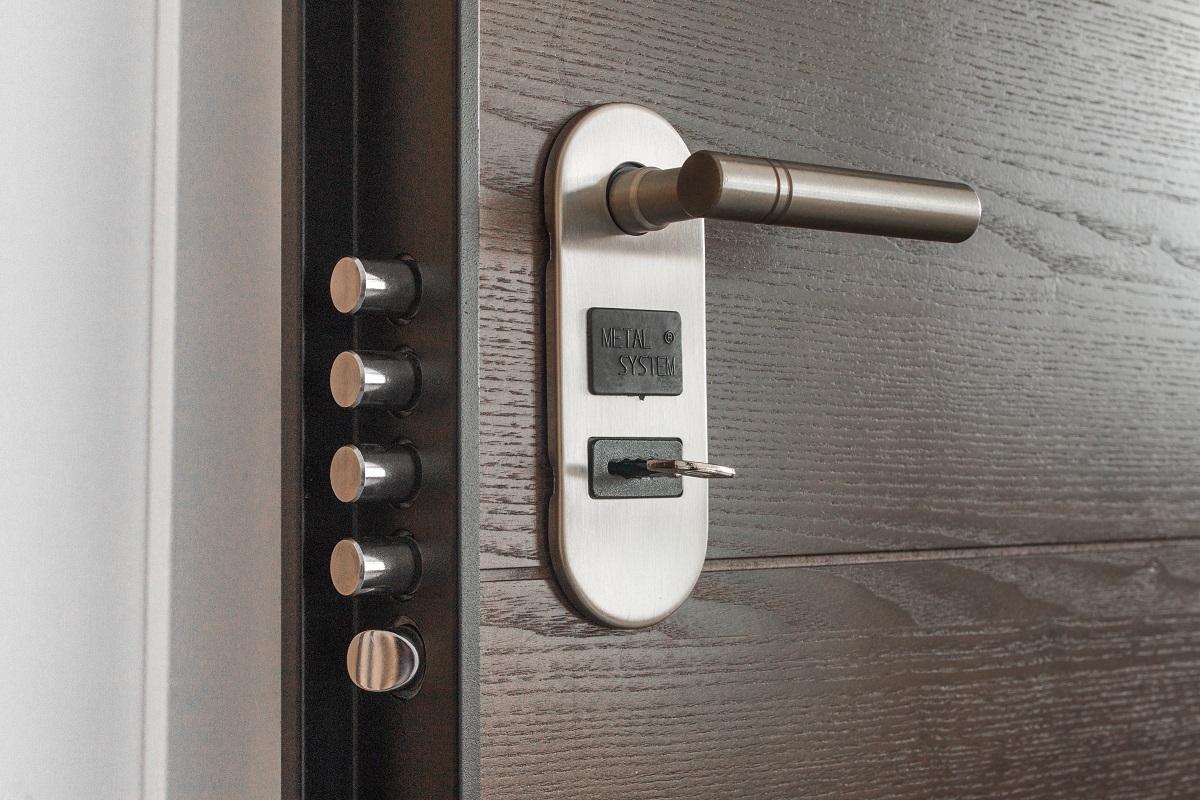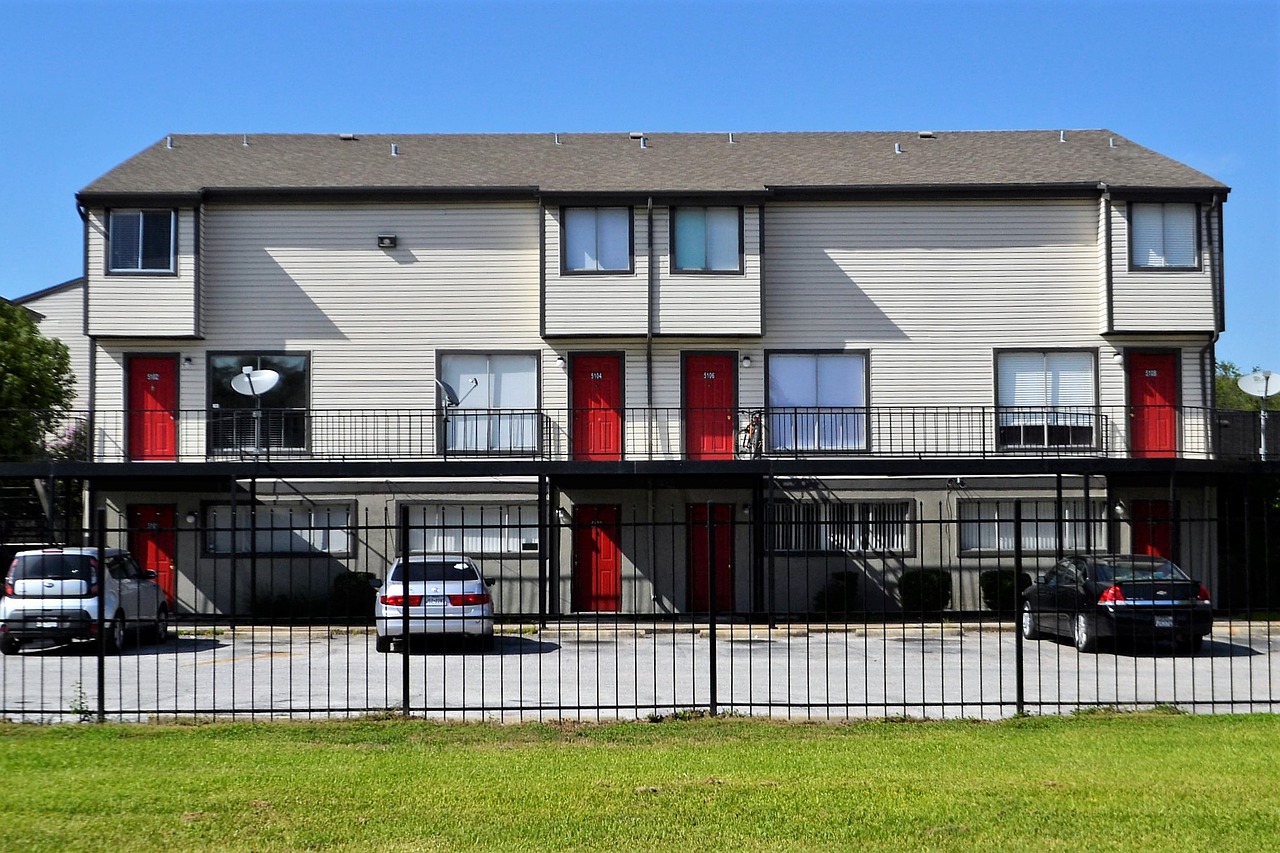
Any home-security plan should begin with your main doors. Remember that the back door, especially if it's hidden from street view, can be even more vulnerable than the front. Burglars frequently ring the front doorbell and, if no one answers, go around to the back of the house, where they typically kick in a door, says Bill Robinson, a senior public information officer with the San Diego Police Department.
Securing Your Home's Primary Doors
Dead Bolt
Get a good-quality deadbolt for your exterior doors and you can stop worrying about that credit-card lock-shimmying trick that works not only in the movies but also in real life. Make sure the lock has a bolt that extends at least an inch into the door frame and that the strike plate (the metal piece that mounts to the door frame and holds the bolt) is attached with screws that are at least three inches long. Installing a new deadbolt requires precise measuring and drilling?it's best to call in a locksmith.
Door Guardian Reinforcing Latch
Far more effective than the old-fashioned chain latch, this device screws into your door frame above your doorknob and is easy to install yourself. It has a small hinged bar that keeps your door firmly shut and provides an extra point of resistance if someone tries to force it open. Slim and unobtrusive, the Door Guardian comes in several finishes, including brass.
Door Reinforcer
This U-shaped metal plate wraps around the outer edge of a wooden door and prevents pry bar–equipped intruders from gouging out your lock. There are models available to fit a dead bolt or a latch-style knob lock. (Note: A knob lock is not adequate protection on its own and should be used only in tandem with a dead bolt.) Since you'll need to remove the doorknob to install this product, have a locksmith do it when he comes to change locks.

Securing Your Home's Windows and Exterior
Burglars generally try to avoid attracting attention with the sound of shattering glass, so by making windows difficult to pry open you'll discourage all but the most desperate crooks. As a further precaution, use outdoor motion-sensor spotlights to foil burglars who work at night.
Windows
Nails: Something as simple as a couple of nails will make it virtually impossible for an intruder to pry open traditional double-hung wood-framed windows. With a 5/32-inch bit, drill a set of holes at a slight downward angle all the way through each side of the lower window sash and halfway into the upper sash. Then slide a three-inch nail into each hole. To ensure that you can easily open windows, holes should be loose enough that the nails slide in and out smoothly.
Basement Windows
Security bars: Yes, the windows are small, but so are teenagers, who account for about 30 percent of burglary arrests annually. Mount custom-made 1-inch- or 1½-inch-wide steel bars right into the window frame or, if your basement also serves as a bedroom or playroom (where a fire escape route is especially important), opt for adjustable quick-release bars.
Back of House
Motion-sensitive lights: Discourage nighttime prowlers by installing motion-sensitive lights. Putting up a solar-powered light won't even require an electrician's help?it gets all the power it needs from the sun and attaches to your home's exterior with the screws provided. Position the light and the solar panel in different locations for maximum sunlight.

Securing Your Home's Auxiliary Doors
Once you've secured your home's front and back doors and the windows, look for other points of vulnerability. Because homeowners so often overlook safeguarding them, attached garages and sliding doors that open onto patios and balconies are favorite points of entry for intruders.
Garage/Toolshed
Security padlock: If you don't have a self-locking automatic garage door, a case-hardened steel padlock is an effective fix. Get one with a shackle (the U-shaped locking part) of at least 9/32 inch, and use a case-hardened steel hasp (attached to the door a foot or so from the ground). If the garage has a door that leads directly into the house, secure it from the inside with a dead bolt.
Sliding Door
Locking bar: The standard locks that come with sliding doors are easy to pry open. Use a locking bar (or a wooden dowel) to keep the door from being forced open. If there is too much space between a sliding door and its upper track, the door can be picked up, tilted outward, and removed?just like a sliding shower door. Install screws along the inside of the upper track, leaving just enough room for the door to slide, and the door can no longer be lifted out.
Doors With Knobs
Door jammer: Perfect for a hotel room or a rented apartment or house with iffy locks, the DavieBar door jammer is essentially a door stopper on a stick. It looks like a footed cane, with a top that hooks under the doorknob and a base that grips the floor, preventing your door from being forced inward. The DavieBar is easy to use and fits in a suitcase.
This article was originally posted on Real Simple.




